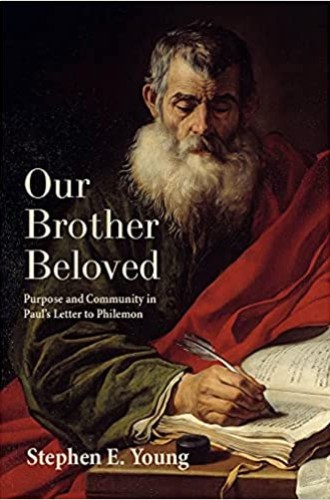Freeing Philemon from the “fugitive slave” theory
Stephen Young lets Paul’s letter speak for itself.
“The letter to Philemon is to my mind the most intriguing and beguiling of all Paul’s letters, with its teasing historical allusions and its special rhetorical charms,” wrote John Barclay in his 1997 study guide to Philemon. Indeed, Philemon is a text in search of a context. There are, of course, some things that we know about the situation. Paul was in prison. Philemon was a key leader in a house church somewhere in the Lycus Valley in Asia Minor. Onesimus, who was being sent back home from visiting Paul, was Philemon’s slave, returning with a new Christian faith. And it is clear that Paul’s letter is a plea for Philemon and his community to embrace Onesimus warmly, as if welcoming Paul himself. (In fact, Paul was planning a visit of his own after his release.) Beyond these meager details, our knowledge relies on educated guesswork. The scholarly tendency is to fill in the gaps by reconstructing the historical situation.
You might be thinking: Wasn’t Onesimus a delinquent slave who turned fugitive and managed to be set straight by Paul? Many readers of Philemon carry that assumption into the text. But you will search in vain if you look for those details in Paul’s letter. It’s common for an error to wedge its way into popular understanding and overwrite the original, or for a detail in a picture that was never there to become fixed in the shared memory. This is called the Mandela Effect, and it seems to be what happened with Philemon.
The fugitive slave scenario is a situational theory that was introduced sometime in the patristic period, took root (partly due to Chrysostom’s support), was legitimated by modern commentaries (especially J. B. Lightfoot), and—voila!—is now treated by many as fact.
Stephen E. Young bursts this bubble in Our Brother Beloved, a monograph based on his doctoral dissertation. Young’s goal is to inspire a fresh reading of Philemon, and that can only happen when the fugitive slave theory is debunked, or at least demoted. Nowhere does the text state that Onesimus either ran away or committed a crime. Too many scholars throughout history, Young urges, have painted Onesimus into the portrait of a thieving slave—further reinforcing cultural stereotypes of noble masters and conniving slaves. If the fugitive slave theory were correct, Young points out, Paul would be sending Onesimus back at the realistic risk of severe corporal punishment or even execution.
Young examines other situation theories (e.g., Philemon sent Onesimus to Paul), but in each case he worries that the mold of the theory constrains the reading of the actual text. His research proposes that we do the opposite: let the text speak for itself, and consider context carefully in light of that.
To carry out this delicate reading, Young draws from positioning theory, a tool from the field of social psychology. This perspective looks at how a text positions figures in ways that establish or reconfigure relationships of power, status, resources, and rights through socially constructed story lines. This approach encourages the reader of Philemon to ask:
How does Paul position himself progressively through the letter in relation to all the other participants in the discursive event? How does this in turn position them in relation to him and each other? In general, what are the normative presuppositions expressed in the letter regarding authority, power, entitlement, obligations, and other social expectations that inform and limit what each participant may say or do?
Our Brother Beloved is an extended exercise in putting these questions to the text.
According to Young, Paul’s letter strategically challenges the Roman status quo of power dynamics—which would be natural to the slave master—and narrates ecclesiocentric story lines that empower Philemon to treat Onesimus as a true family member rather than an expendable subservient. The honoring of Apphia (a woman) and the humble self-description of Paul himself as a prisoner, for example, destabilize Philemon’s default orientation toward social status. We might think of this approach as breaking the rules of the chessboard by giving the pawns more agility and power and the rooks less. Paul’s ultimate goal is to shift Philemon’s relationship to Onesimus from one of domination to one of loving mutuality and generous partnership.
Young offers a commentary-like reading of Philemon’s 25 verses that produces numerous fresh insights. He succeeds in demonstrating that the reader doesn’t have to begin with a situational container in order to draw such insights out from Philemon.
Young is not, however, completely dismissive of any speculation about the historical situation. In fact, he strongly promotes the idea that Paul was encouraging Philemon to manumit Onesimus as a Christian duty. This freedom would function not simply as an end in itself but for the sake of a new beginning between the two beloved brothers.
I find Young’s call to break the text of Philemon free from the fugitive slave theory salutary. Contextual study should enhance textual interpretation, not master or constrain it. Some will find Young’s positioning theory approach a bit confusing to understand, but the patient reader will gain much from his sociopsychological and rhetorical approach. The academic literature on Philemon has grown considerably over the last few decades; Our Brother Beloved should be one of the top books on the reading list.
A version of this article appears in the print edition under the title “Was Onesimus a fugitive slave?”





